Introduction
Code documentation plays a crucial role in software development, providing developers with a roadmap to understand and interact with the codebase effectively. It ensures that everyone, from developers to end-users, can grasp the project's purpose, design, and functionality. Well-documented code improves readability, making it easier for developers to contribute without the hurdle of deciphering complex code.
Moreover, documentation bridges the knowledge gap in team-based development, enabling smoother transitions and knowledge sharing among team members of varying expertise levels. It's not just about having information but presenting it in an easily digestible manner. Code documentation is a strategic asset that enhances software usability and maintainability, promoting efficient project progression and a culture of knowledge transfer.
Why Code Documentation is Necessary
Code documentation is the backbone of software development, serving as a critical guide for developers to understand and interact with the codebase effectively. This essential practice ensures that anyone, from developers to end-users, can get a clear picture of the project's purpose, design, and functionality. By investing time in creating clear, concise, and relevant documentation, teams avoid the pitfalls of confusion and errors that come from diving into a poorly documented codebase.
A well-documented project improves readability and comprehension, making it easier for developers to jump in and contribute without the hurdle of deciphering complex code on their own. It acts as a roadmap, setting and managing expectations for all stakeholders involved. Consider the README file—a cornerstone of any project documentation—which provides a comprehensive overview of the project at a glance.
Moreover, in the realm of team-based development, where collaboration is vital, documentation bridges the knowledge gap, facilitating smoother transitions and knowledge sharing among team members of varying expertise levels. It's not just about having the information but presenting it in a way that is easily digestible and avoids technical jargon, aiming for clarity over complexity.
In summary, code documentation is not a mere formality but a strategic asset that enhances the usability and maintainability of software, promoting a culture of knowledge transfer and efficient project progression.
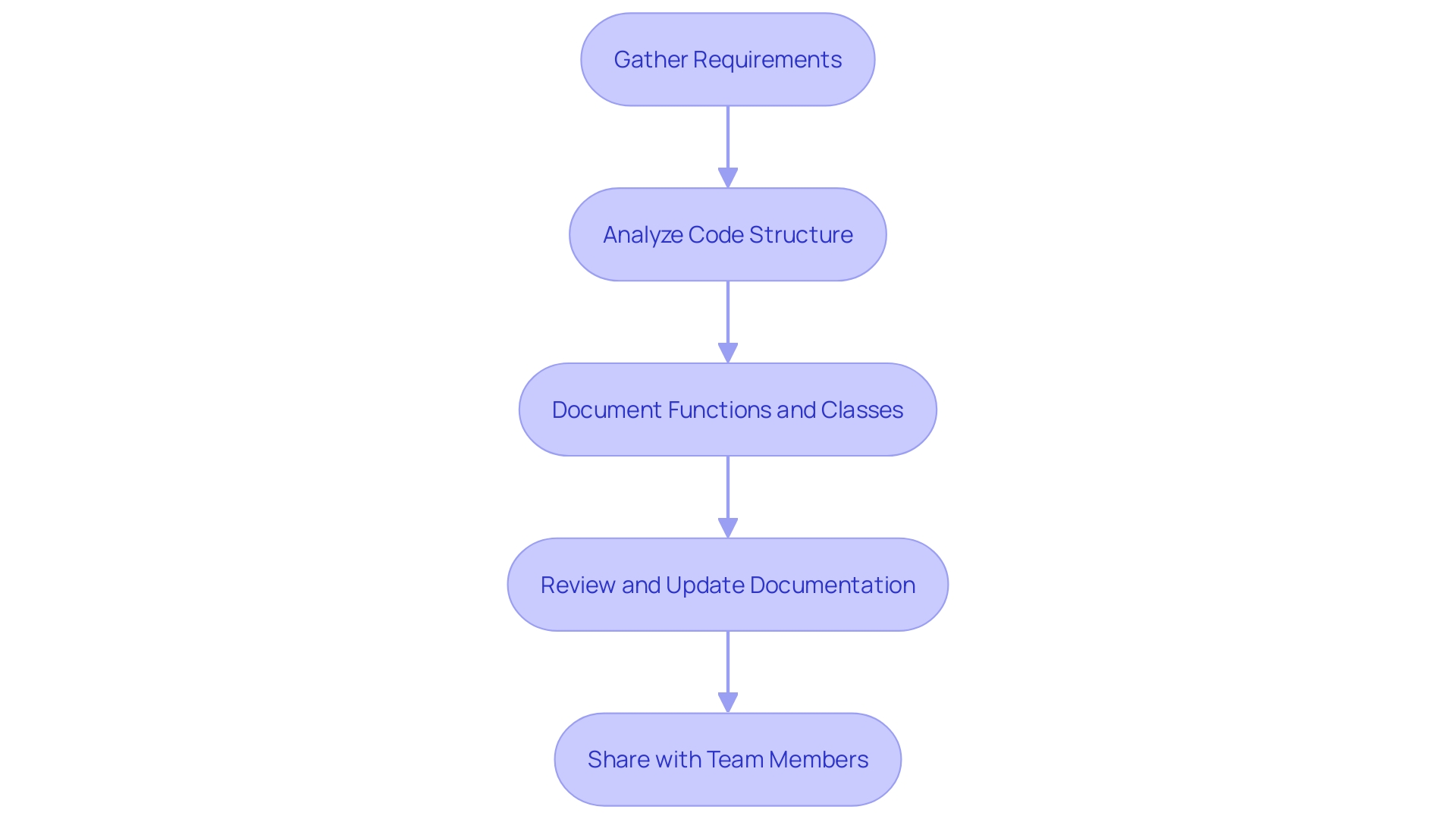
Adding Comments to Your Code
Adding comments to your code is a crucial practice for developers. These lines of text, though ignored at runtime, are invaluable for explaining the reasoning and logic behind code segments, making them a key part of inline documentation. Let's delve into the significance of code comments and the strategies for crafting them effectively.
When tackling complex systems, such as distributed systems with concurrent users, the clarity provided by comments becomes even more critical. As demonstrated by Amazon Q Developer's bug resolution in distributed systems, comments can illuminate intricate data consistency issues that are otherwise challenging to detect and reproduce. For instance, the process of incrementing a shared counter in a distributed environment can lead to confusion without well-documented code.
Moreover, the costly mistake in the Ariane 5 launch, where an undetected error led to a loss of seven billion dollars, emphasizes the financial and temporal importance of clear documentation. With the future focus on automated quality control and the necessity for a chain of custody in software development, comments serve as an essential tool for tracing code history and understanding its evolution through various environments.
Effective comments are succinct and informative, shedding light on the 'why' behind the code rather than the 'what'. According to industry experts, comments should guide developers through the function's purpose, parameters, and return values, along with usage examples. This practice is not only beneficial for current project members but also for future maintainers who may encounter the code.
Statistics from AI pair-programming tools reveal that both junior and senior developers benefit from AI-generated code suggestions, which enhance productivity across multiple aspects, including task time and code quality. This insight underscores the value of clear, concise documentation in assisting developers throughout the coding process.
Humor, too, has its place in code comments, as seen in projects like faker and lolcommits. While it can boost engagement and help tackle challenging tasks, it's vital to balance humor with the primary goal of documentation—to clarify and inform. Ultimately, the art of commenting is about enhancing the collaborative experience and fostering an environment where code is not only functional but also understandable.
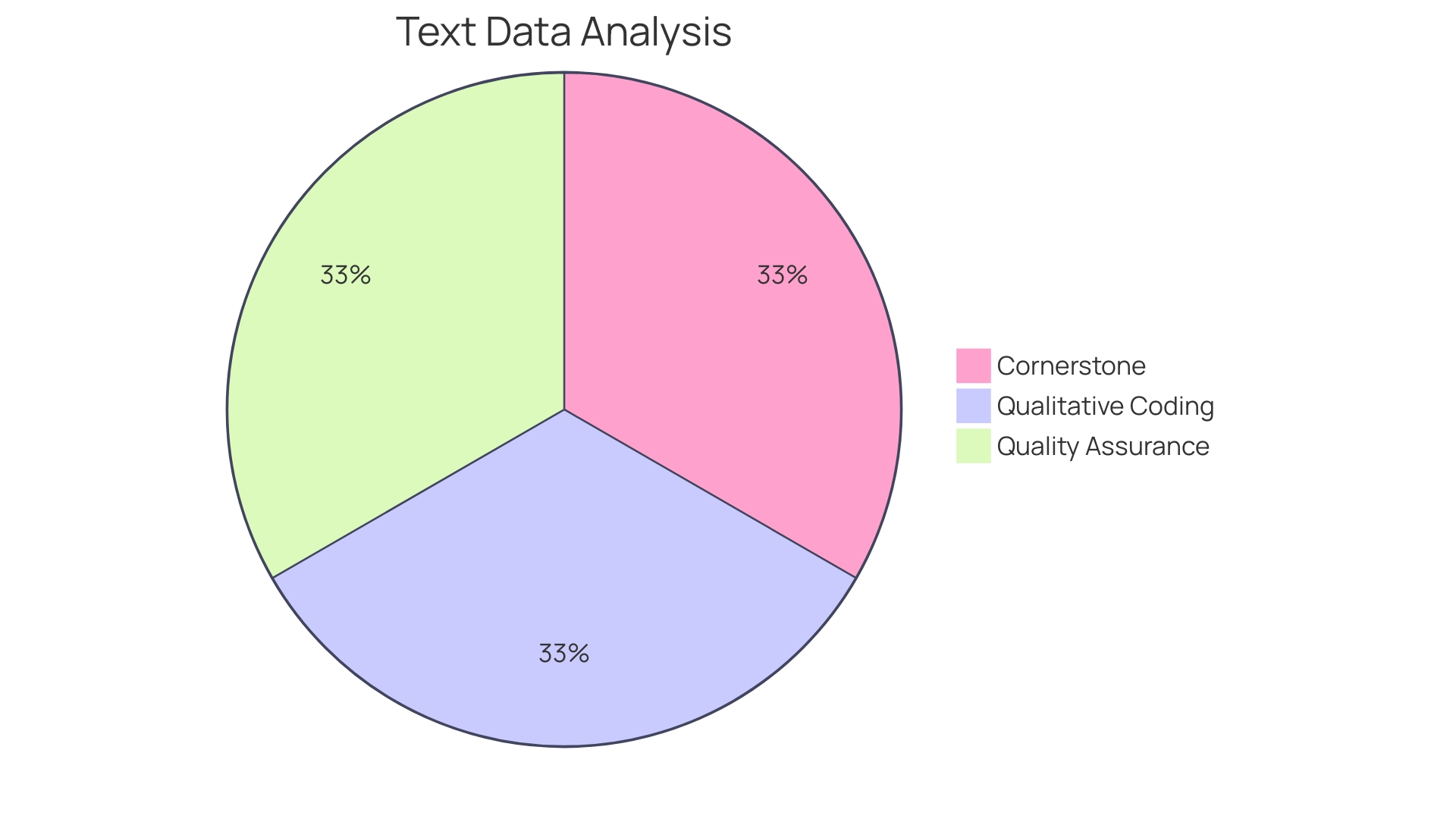
Writing Test Cases
Test cases stand as the cornerstone of ensuring code reliability and correctness, acting as a litmus test for the functionality of software. Coders craft meticulous test scenarios to validate their work and preemptively identify bugs, which is instrumental in streamlining the development cycle. Let's delve into the significance of test cases, the varieties of tests available, and how to precisely document them to achieve thorough clarity and exhaustive coverage.
Meticulously designed test cases allow for systematic validation of features, proper integration, and bug detection. The objective of each test case is to scrutinize specific aspects of software functionality or performance. For example, in the banking sector, M&T Bank's commitment to high-quality code standards exemplifies the crucial need for well-documented test cases to maintain software integrity in an environment with stringent security and regulatory demands.
The evolution of software testing reflects the industry's progression towards ensuring quality and reliability, akin to the shift to mass production quality control in Fordism. In today's digital age, even a minor glitch can lead to significant financial repercussions, underscoring the imperative nature of software testing. Each test case serves as an independent unit, detailing the steps to evaluate particular software elements, as highlighted in the step-by-step guide to creating test cases, which includes clearly defined identifiers and priorities that gauge the severity and impact of the test case on the application's overall performance.
Software testing is not just a technical necessity but a strategic component that provides substantial ROI when modern methods are employed. It's an art and science that QA teams navigate through, where challenges transform into opportunities for continuous improvement in quality assurance. As we consider the intricacies of software testing, from unit testing to acceptance testing, it's clear that each stage serves a pivotal role in delivering software that meets the high standards expected by users and stakeholders alike.
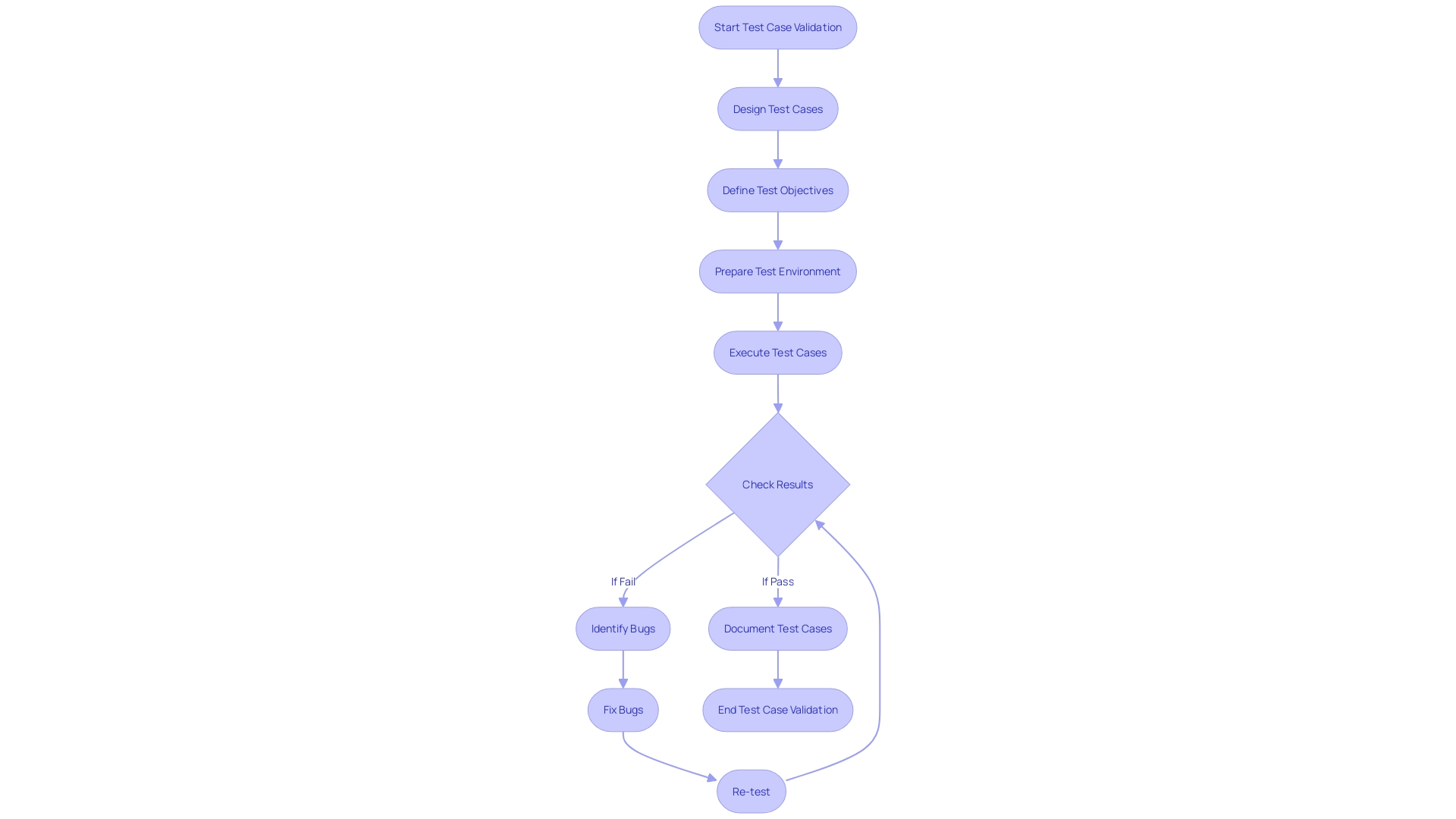
Providing Suitable Git Commit Messages
Git commit messages serve as an integral part of code documentation that often doesn't receive the attention it deserves. Crafting a clear and informative commit message can shine a light on the alterations made to the codebase and simplify the process of tracking and understanding the project's evolution.
The essence of a robust commit message lies in detailing what the change entails, explicitly stated in the title. It should also explain the reasoning behind the change, the problems it addresses, and the scenarios it enables. Moreover, outlining how the change has been tested, particularly for validations beyond unit tests, can prove invaluable for future reference.
Incorporating keywords in commit messages can significantly enhance clarity. Labels such as 'FEAT' for new features and 'FIX' for corrections help others quickly grasp the nature of the changes. For example, a commit titled 'FIX: Resolve crash issue on specific devices' immediately informs reviewers about the purpose of the commit.
While there is no 'one-size-fits-all' approach to the ideal commit size, research analyzing approximately 30,000 developers' pull requests suggests that the size of a commit correlates with lead time, feedback, and rate of change failure. This data can guide us in striking a balance, ensuring that commits are neither too brief to be informative nor too extensive to be manageable.
Understanding the significance of each commit not only aids in better code documentation but also facilitates effective collaboration among teams. This practice becomes especially crucial in complex environments, such as those involving medical device software, where maintaining a meticulous record of changes is paramount.
Ultimately, the choice of commit message structure, the inclusion of specific details, and the use of descriptive keywords contribute to a more navigable and comprehensible development history. By adhering to these guidelines, developers can ensure that commit messages serve as a valuable asset in the documentation arsenal.
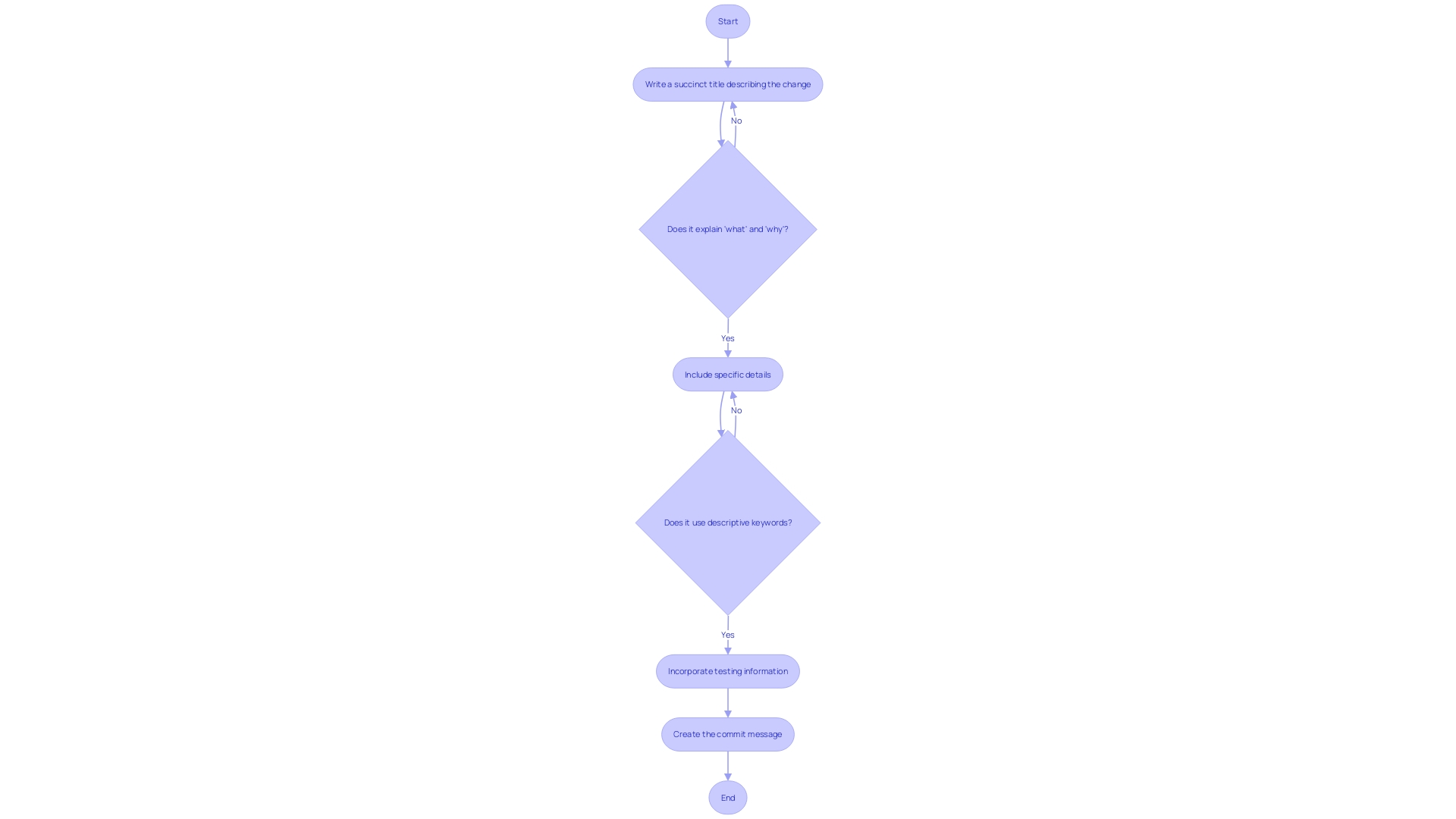
Maintaining a Proper README File
The README file is a cornerstone of any software project, acting as a gateway for developers to gain insights into a codebase. It's the document that sits at the root directory, introducing the project, detailing its dependencies, providing installation instructions, and guiding users on how to get the most out of the software. A well-crafted README file goes beyond the basics; it becomes a dynamic, living document that is regularly updated to reflect the project's evolution, much like the script used to revamp the README for the GenAI project, which pulls in the latest information to keep the document fresh and informative.
The essence of a README file is to provide clarity and understanding to its readers. It should be thought of as the face of the project repository, often the first port of call for potential users, contributors, and collaborators. It's typically a markdown (.MD) file that speaks volumes about the project in a concise manner. The README should encapsulate what the project does, how it does it, and the value it offers, which is essential in a world where software development is increasingly reliant on open source components that carry their own set of risks, as highlighted by experts like Mike McGuire.
In the spirit of minimalism and clarity, here are the key elements to consider when crafting your README:
- Project Title and Description: Start with a compelling title and a succinct description that captures the essence of your project and its usefulness.
- Getting Started: Provide clear instructions on how to set up and use the project, enabling users to jump straight into action with minimal friction.
- Usage Guidelines: Outline how one can use the project effectively. This may include examples of the software in action or links to more detailed documentation.
Statistics from GitHub highlight the rapid incorporation of AI and machine learning components in projects, underscoring the need for READMEs to be clear and comprehensive. With nearly 10% of companies experiencing security breaches due to open source vulnerabilities, it's more important than ever that Reads accurately represent the current state of the project and any associated risks.
Remember, a README is more than just a file; it's an invitation to engage with your project. As developers navigate through countless repositories, an informative and user-friendly README can make your project stand out and ensure that it is used, maintained, and contributed to effectively.
Writing Self-Documented Clean Code
Self-documented clean code is the art of crafting code that stands on its own, speaking clearly to developers who come across it. It's about writing code that makes its purpose and function immediately apparent, reducing dependence on extensive documentation. In striving for code that is self-explanatory, developers adopt a coding philosophy that emphasizes clarity and simplicity. The practice of writing clean code involves carefully chosen naming conventions, a thoughtful approach to architectural design, and adherence to coding standards that make the codebase accessible to others.
To illustrate, consider the naming of methods and variables. Effective names are those that convey the function's intent without ambiguity, much like an informative chapter title in a book. For example, a method intended to notify managers of employees eligible for vacation could be aptly named NotifyManagersOfEligibleVacationers. This self-descriptive approach is a hallmark of clean code and speaks directly to the code's readability.
Furthermore, clean code is inherently maintainable, allowing for seamless updates and enhancements. Developers can engage with the codebase, making necessary changes with confidence and precision.
Here are some guiding principles for writing clean, self-documented code:
- Clarity of Intent: Write code that clearly communicates its purpose. This can be achieved through well-thought-out method names and logical structuring.
- Simplicity: Keep the code as straightforward as possible, avoiding convoluted logic that could confuse future developers.
- Structure and Elegance: Organize code in a manner that is logical and aesthetically pleasing, which can make it more understandable and easier to navigate.
One can't overstate the benefits of clean code. It's not just about writing; it's about communicating. When code clearly expresses its intent, it becomes a powerful tool for collaboration and innovation. It eases the onboarding of new team members, facilitates code reviews, and fosters a culture of quality and craftsmanship.
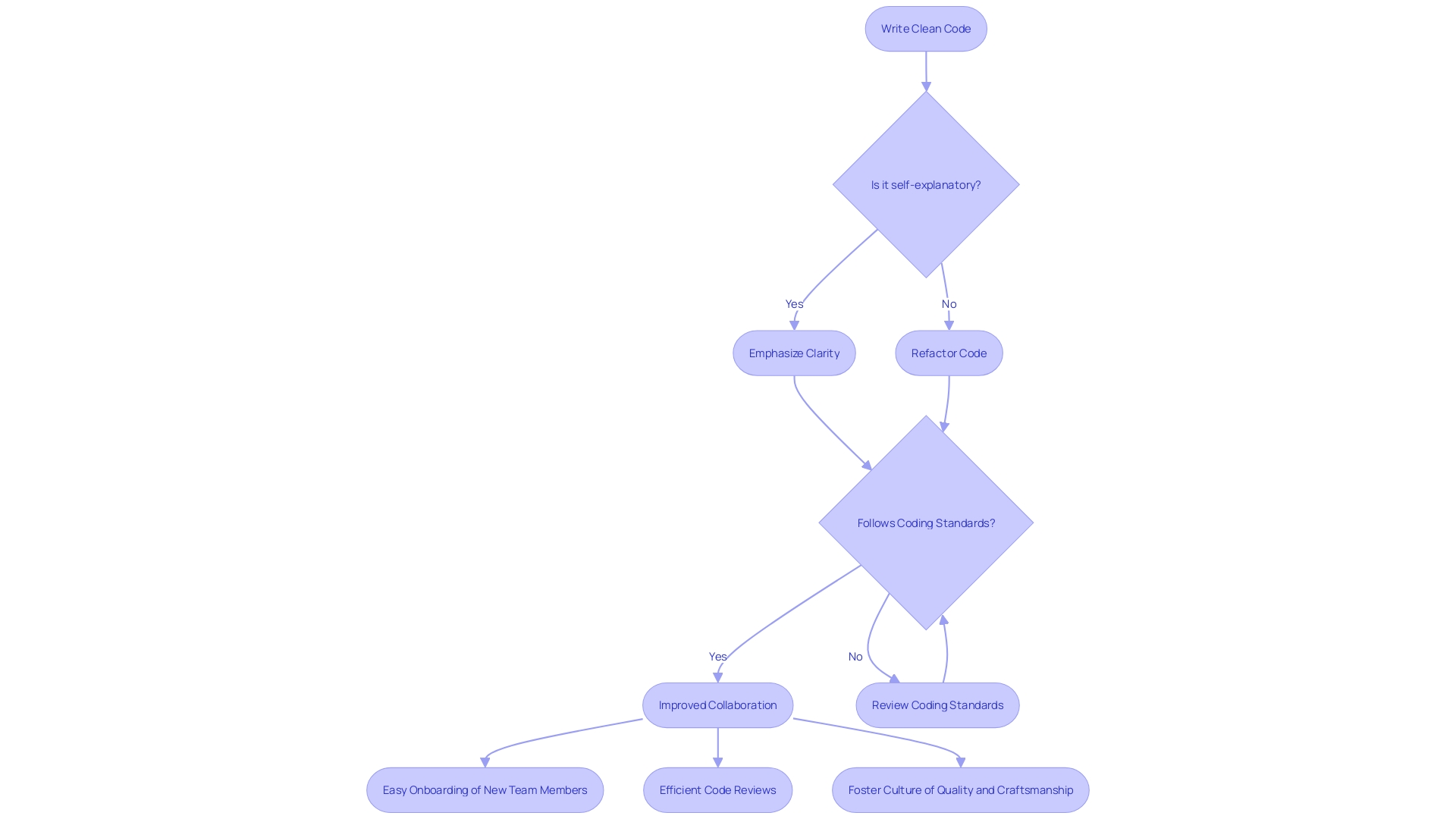
Tools and Extensions for Code Documentation
A variety of tools and extensions have been developed to assist in the code documentation process, offering functionalities that range from auto-generating documentation from code comments to creating interactive documentation interfaces. For instance, Texinfo, the official documentation format of the GNU project, allows for the creation of a single source file that can be converted into multiple output formats like HTML, PDF, and Info. This format streamlines the process by enabling the production of both online and printed materials from one document source.
Embracing the latest technologies, TypeScript, a language that extends JavaScript by adding static types, celebrated its 10-year anniversary with the release of TypeScript 4.9. This update introduces features that enhance code documentation such as improved intersection reduction and union compatibility.
Moreover, the publication 'Geocomputation with R' demonstrates the power of using R, a language with strong data processing and geospatial capabilities, for managing geographic data. It serves as a testament to the capabilities of well-documented code in tackling complex data-related challenges.
Experts emphasize the significance of clear and concise documentation. A quote from an industry professional underlines that code documentation should clearly convey the functionality, design, and usage of the codebase to facilitate understanding and collaboration among developers, users, and other stakeholders. Furthermore, statistics highlight that software documentation is crucial in software development. It acts as a guide, sets expectations, and conveys the software's purpose, making it a foundational element for any project.
In conclusion, the integration of advanced tools and adherence to best practices in documentation are essential for enhancing the efficiency and clarity of the documentation workflow. These tools not only automate tedious processes but also provide structured and accessible documentation, ensuring that all stakeholders have a thorough understanding of the software's capabilities.
Best Practices for Effective Code Documentation
Effective code documentation is a linchpin of successful software development, offering a clear, concise roadmap for both current and future developers. By adhering to best practices, documentation can transform from a mere formality to a powerful tool for enhancing understanding and collaboration within a development team.
To begin, naming conventions are essential. They should be intuitive, allowing developers to infer the nature of functions, classes, or variables at a glance. As advocated by industry experts, the first paragraph of a JSDoc comment, for example, must provide a succinct description of the symbol. This acts as a beacon, guiding developers through auto-completions and search indexes in their editors.
Documenting functions and classes goes beyond merely stating what they are; it's about explaining their purpose and behavior in the ecosystem of the codebase. A quote from a seasoned developer echoes this sentiment, emphasizing the creation of documentation that is "clear, concise, and directly relevant to the understanding and usage of the codebase." This approach ensures that the essentials are grasped quickly, avoiding the pitfalls of redundant or overly verbose explanations.
The organization of documentation is another critical factor. It should facilitate easy navigation, with headings to separate sections and succinct summaries that allow for rapid filtering. This mirrors the structured approach seen in recent educational developer content, where the focus is on 'edutainment'—a blend of education and entertainment to engage the developer audience.
Moreover, the README file is the cornerstone of your project's documentation. It provides a comprehensive yet brief overview, setting the stage for anyone interacting with your project, whether they are contributors, collaborators, or users. Statistics emphasize the importance of software documentation, describing it as the foundation of any software project, setting expectations, and guiding the development process.
Lastly, when considering accessibility, it's vital to create documentation that is inclusive, allowing a diverse audience to consume and create content on the web. This not only broadens the reach of your project but also enriches the development experience by embracing a multitude of perspectives.
Conclusion
Code documentation is crucial for software development, improving readability and facilitating efficient collaboration. Well-documented code allows developers to understand and contribute to the codebase easily. It bridges knowledge gaps in team-based development and enhances software usability and maintainability.
Adding comments to code provides valuable explanations and logic behind code segments. Effective comments guide developers through the purpose, parameters, and usage examples of functions.
Writing test cases ensures code reliability and bug detection. Meticulously designed test cases validate software features and integration.
Git commit messages serve as an integral part of code documentation, providing insights into codebase alterations and simplifying project tracking and understanding.
The README file is a cornerstone of software projects, offering a comprehensive overview and guiding users, contributors, and collaborators.
Writing self-documented clean code reduces the need for extensive documentation. It involves clear naming conventions, logical organization, and adherence to coding standards.
Tools and extensions assist in code documentation, automating processes and providing structured documentation.
Following best practices for code documentation is essential, including intuitive naming conventions and concise explanations of functions and classes.
In conclusion, code documentation plays a vital role in software development, improving readability and promoting efficient collaboration. By adhering to best practices and utilizing tools, developers can achieve maximum efficiency and productivity.
Start documenting your code with Kodezi and improve your productivity today!
Frequently Asked Questions
What is code documentation, and why is it necessary?
Code documentation is an essential part of software development that serves as a guide for developers to understand the project's purpose, design, and functionality. It is necessary because it improves readability, comprehension, and collaboration, facilitates knowledge transfer, and promotes efficient project progression.
How does code documentation benefit developers?
Documentation benefits developers by providing a clear picture of a codebase, making it easier for them to contribute, understand complex systems, and manage knowledge sharing among team members. It serves as a roadmap and sets expectations for the project.
What is the importance of adding comments to code?
Adding comments to code is crucial for explaining the reasoning and logic behind code segments. It can clarify complex processes and is essential for tracing code history and understanding its evolution.
How can comments in code prevent costly mistakes?
Well-documented code can prevent costly mistakes by illuminating intricate issues, as seen in the Ariane 5 launch error, which resulted in a significant financial loss. Clear documentation can help detect and reproduce issues that might otherwise go unnoticed.
What is the role of test cases in software development?
Test cases are instrumental in ensuring code reliability and correctness. They act as a litmus test for software functionality, allowing developers to validate their work, detect bugs, and maintain high-quality standards, as seen in the banking sector with M&T Bank.
Why are Git commit messages important in code documentation?
Git commit messages are important because they detail the changes made to the codebase and simplify the tracking and understanding of the project's evolution. They can highlight the nature of changes and provide context for future references.
What should a proper README file contain?
A proper README file should introduce the project, detail its dependencies, provide installation instructions, and guide users on how to get the most out of the software. It should be a dynamic document that is regularly updated.
What is self-documented clean code?
Self-documented clean code is code that is written in a way that its purpose and function are immediately apparent, reducing the need for extensive documentation. It follows a philosophy of clarity and simplicity in naming conventions, architectural design, and coding standards.
What tools and extensions are available for code documentation?
Tools like Texinfo and extensions like TypeScript offer functionalities to auto-generate documentation from code comments and create interactive documentation interfaces. They help automate the documentation process and make it more structured and accessible.
What are the best practices for effective code documentation?
Best practices include using intuitive naming conventions, documenting the purpose and behavior of functions and classes, organizing documentation for easy navigation, maintaining a comprehensive README file, and creating inclusive documentation accessible to a diverse audience.
How do comments enhance the coding process for developers?
Comments enhance the coding process by providing AI-generated code suggestions that improve productivity, task time, and code quality. They make it easier for developers to understand the code, regardless of their experience level.
Can humor be included in code comments?
Humor can be included in code comments as it can boost engagement and help tackle challenging tasks. However, it's important to balance humor with the primary goal of documentation, which is to clarify and inform.
What are the key elements to include when crafting a README file?
The key elements include a compelling project title and description, clear getting started instructions, and usage guidelines with examples or links to more detailed documentation.
How do you write clean, self-documented code?
To write clean, self-documented code, one should ensure clarity of intent with well-thought-out method names, keep the code straightforward, and organize it logically and elegantly.
What is the significance of software testing in the industry?
Software testing is crucial for ensuring quality and reliability, reflecting the industry's progression towards high standards. It provides substantial ROI and is a strategic component in the QA process.
How does the size of a Git commit affect the development process?
The size of a Git commit correlates with lead time, feedback, and the rate of change failure. It's important to strike a balance so that commits are informative yet manageable.




